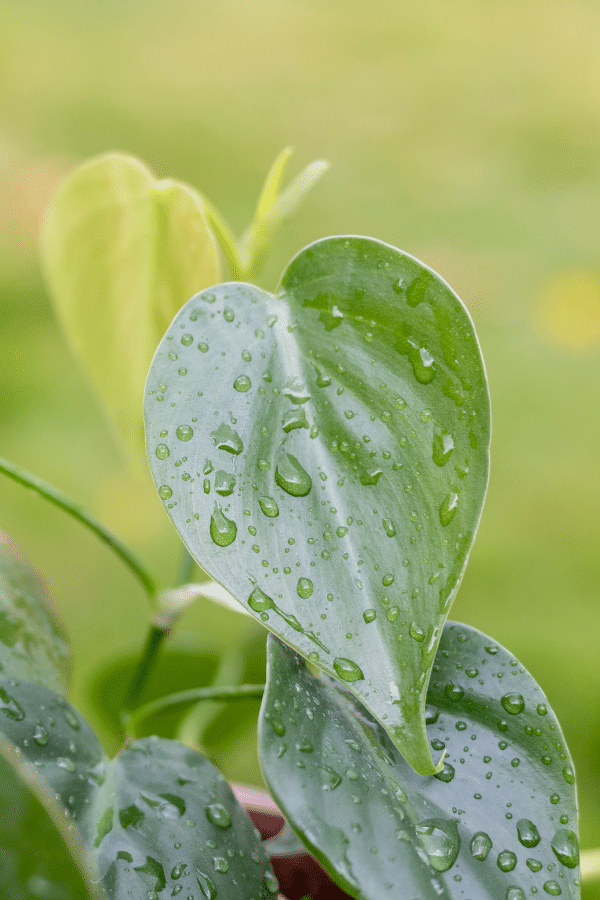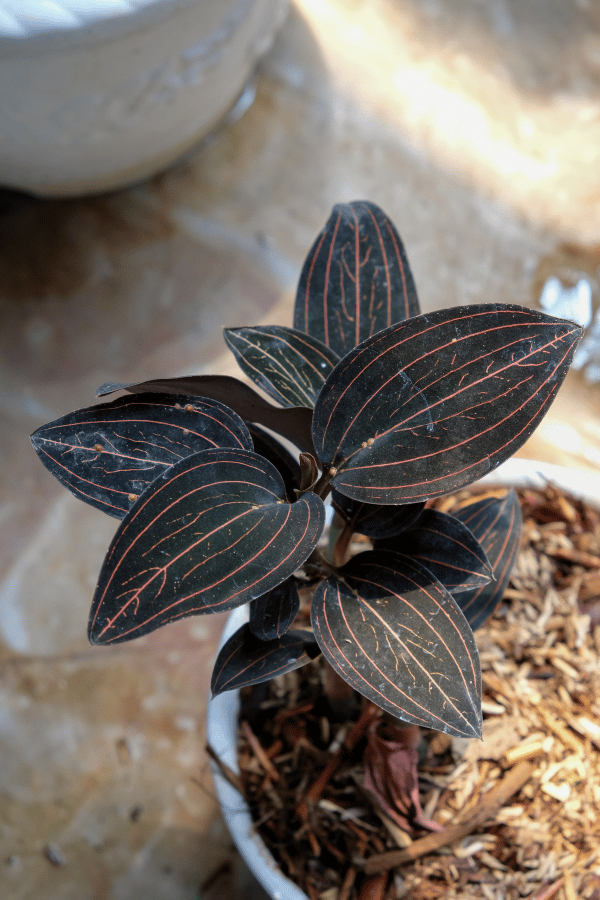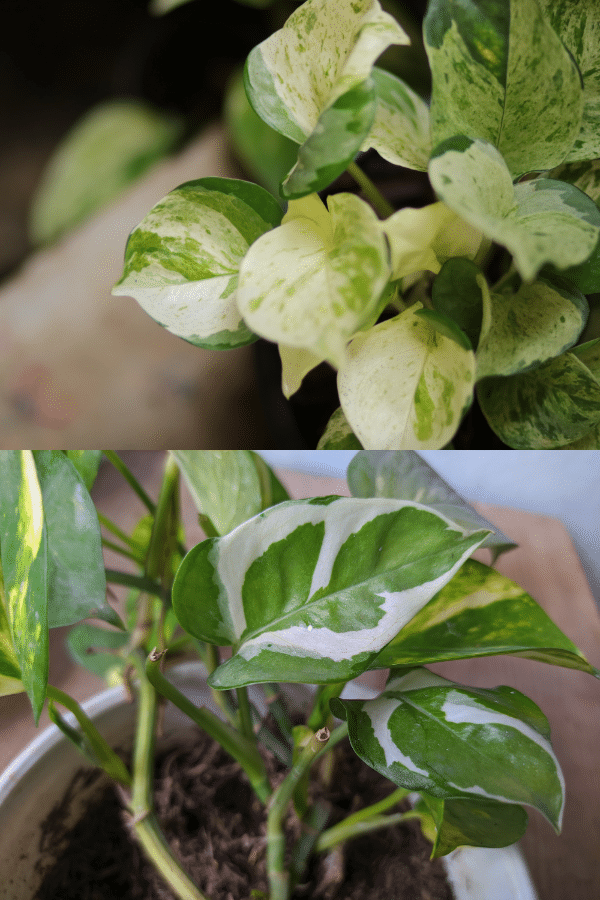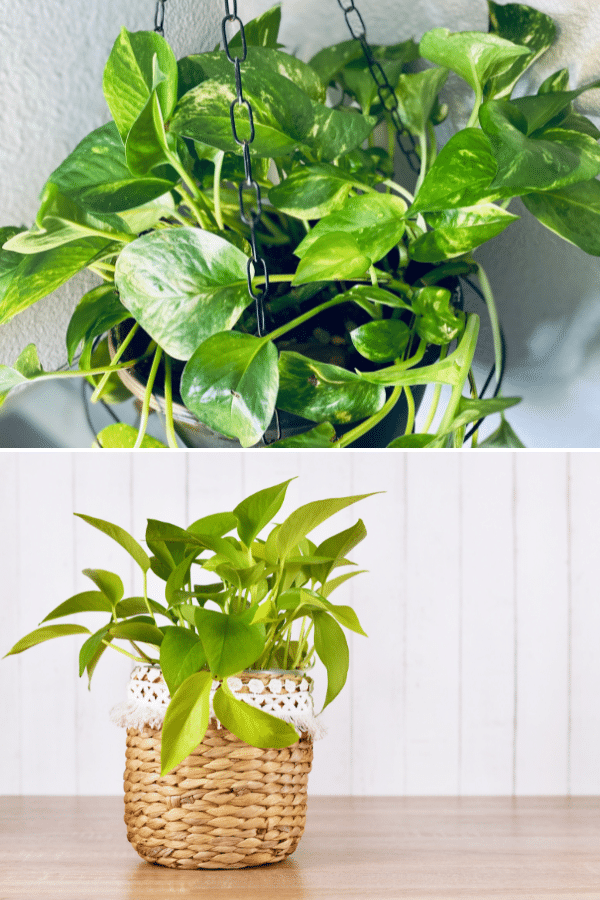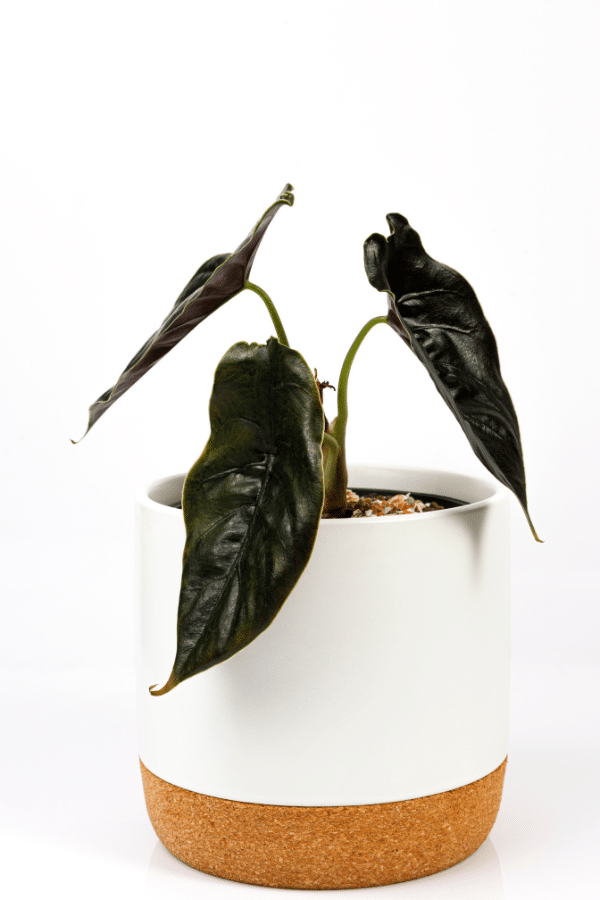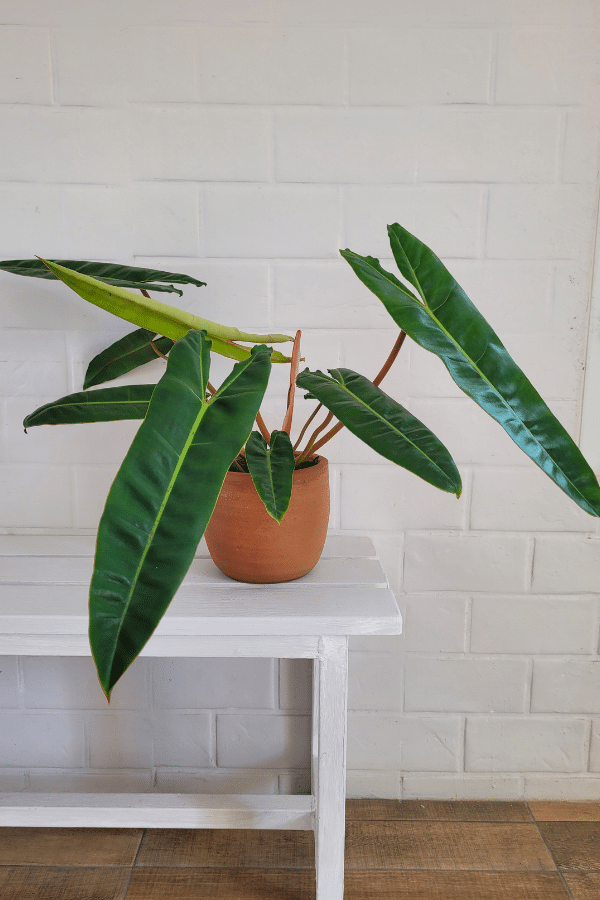String of Dolphins
Scientific Name: Curio (Senecio) Peregrinus
Common Name: String of Dolphins
String of Dolphins care is an easy plant to grow and care for. If you are looking for a beautiful trailing houseplant with unique foliage, a String of Dolphins plant may be for you.
To give this Curio plant the best care, it requires well-draining soil, water the plant when the soil is dry, provide it with bright indirect sunlight, temperatures ranging from 65-85F, and average humidity levels.
Quick Care Overview
| Common Name | String of Dolphins |
| Scientific Name | Curio Peregrinus |
| Family | Asteraceae |
| Origin | South Africa |
| Growth Rate | Medium |
| Identification | Trailing plant with dolphin-shaped foliage |
| Height | Up to 3 feet in length |
| Soil | Well-draining soil |
| Water | Water when the soil is dry |
| Temperature | 65-85F |
| Sunlight | Bright indirect sunlight |
| Toxic to Cats & Dogs | Yes |
| Toxic to Humans | Yes |
| Pests | Fungus gnats, mealybugs, aphids, spider mites |
| Diseases | Root rot |
Below we will dive deep into this String of Dolphins care guide.
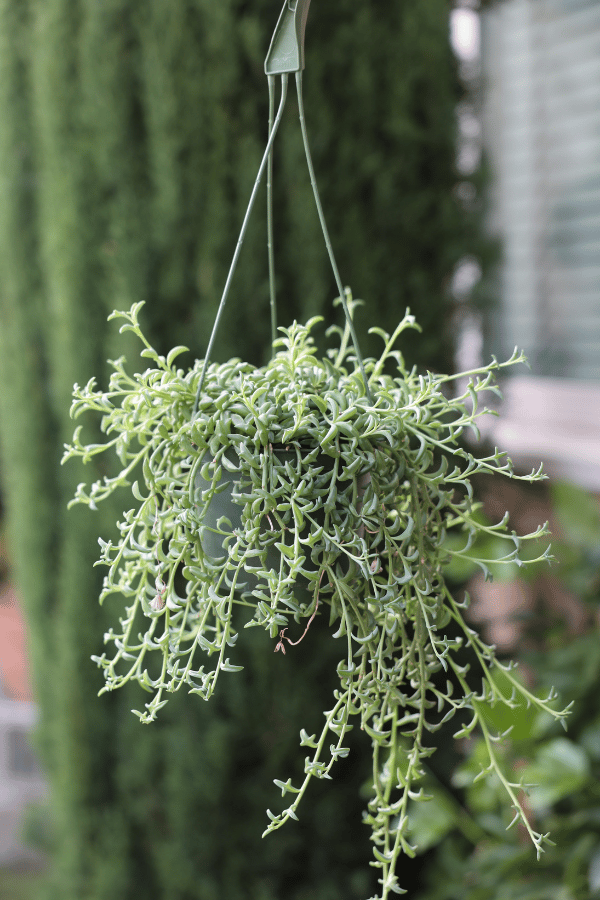
String of Dolphins History
Curio Peregrinus, otherwise known as the string of dolphins, is a lovely succulent that is a hybrid of the string of pearls and the candle plant. This trailing succulent features dolphin-shaped foliage adorning long tendrils. This cute trailing plant is perfect for hanging baskets, growing up moss poles, or even trellises.
String of Dolphins Identification
The String of Dolphins is known for its iconic dolphin-shaped foliage, which is a muted blue-green color. This succulent will bloom occasionally but is primarily kept for its unique foliage and cascading slender stems.
String of Dolphins Growth Facts
This quickly spreading plant looks lovely when grown in a hanging basket or wide container where its hanging tendrils may cascade over to make a gorgeous display.
How Big Does a String of Dolphins Get?
The string of dolphins may grow up to 6” tall.
String of Dolphins Care
String of Dolphins is a low-maintenance, drought-tolerant, and easy to care for succulent. However, this plant requires plenty of light to thrive.
String of Dolphins Soil
The String of Dolphins will do best if grown in well-draining, airy soil. Commercial cacti/succulent mixes are perfect for this plant. Alternatively, you may create your own mixture by combining a quality commercial potting mix with perlite and sand at a 2:1:1 ratio.
String of Dolphins Fertilizer
String of Dolphins, being a low-maintenance plant, will not require regular fertilization. However, it will benefit from light feeding from an organic fertilizer such as fish emulsion, liquid kelp, or worm castings in the early spring. Ensure that you follow all label instructions to avoid overfeeding, which may lead to permanent damage.
String of Dolphins Watering
String of Dolphins can retain water in their foliage for prolonged periods, making them drought-tolerant. You should allow the soil of your string of dolphins to dry out completely before rewatering. Watering frequency should be reduced in fall and winter during the plant’s dormancy.
String of Dolphins Light Requirements
String of Dolphins requires at least 6 hours of bright light daily to thrive. Therefore, a southern-facing window will be perfect for this plant. If necessary, you may use grow lights to supplement your string of dolphin’s light requirement.
String of Dolphins Temperature & Humidity
String of Dolphins will grow best if kept in warm environments with a temperature between 65-85F and average humidity. However, this succulent will tolerate winter temperatures as low as 40 degrees Fahrenheit. Unlike other houseplants, the String of Dolphins will do fine if kept next to a cool window in winter.
Repotting String of Dolphins
Your String of Dolphins will not need to be repotted frequently, and in fact, will prefer to remain a bit root bound. However, you should repot your string of dolphins every 2-3 years. Select a container that is 1-2 inches larger than the previous container. Next, carefully repot your plant (being careful to avoid breaking too many tendrils), refresh the soil, tamp lightly, and water thoroughly. Place your newly potted in indirect light to become reestablished.
String of Dolphins Maintenance & Pruning
Periodically remove any dead, diseased, or discolored foliage using sharp, clean shears.

String of Dolphins Propagation
String of Dolphins may be easily propagated through stem cuttings. You may propagate in either soil or water. Cuttings should have at least 2-3 nodes. After cutting your stem(s) with sharp, clean shears, remove all but the top two-three leaves. Place the cuttings into water (or directly into soil). Ensure that the water does not dry up or become murky. Roots should appear within a few weeks. After the roots are a few inches long, plant them into soil. Ensure that you keep your newly potted cuttings moist and keep them in direct light.
String of Dolphins Toxicity
Toxicity to Humans
String of Dolphins is considered toxic to humans and should not be consumed. Ingestion of this plant may cause nausea, vomiting, and other digestive upset. Keep this plant away from small children and babies.
Toxicity to Cats & Dogs
String of Dolphins is considered toxic to pets. Keep this plant away from your cat or dog. If you suspect your cat or dog has consumed any portion of this plant, contact your veterinarian or animal poison control center.

String of Dolphins Problems
String of Dolphins Leaves Turning Yellow
When it comes to yellow foliage of your String of Dolphins, it is typically due to overwatering. Ensure that you do not overwater your plant or allow it to sit in standing water within the plant container’s drainage tray.
String of Dolphins Leaves Turning Brown
When the foliage of your String of Dolphins turns brown, it is often due to overwatering or being grown in low-light conditions.
String of Dolphins Diseases
Although String of Dolphins is not prone to any particular disease, it may still experience issues related to overwatering, such as root rot. Therefore, ensure that you do not overwater or allow this plant to sit in standing water within the plant container’s drainage tray.
String of Dolphins Pests
String of Dolphins may suffer issues from common indoor houseplant pests such as mealybugs, aphids, spider mites, and more. Ensure that you check your plant periodically for signs of infestation. Upon identification of an infestation, isolate your plant, and treat it with a pesticide such as neem oil or insecticidal soap.

